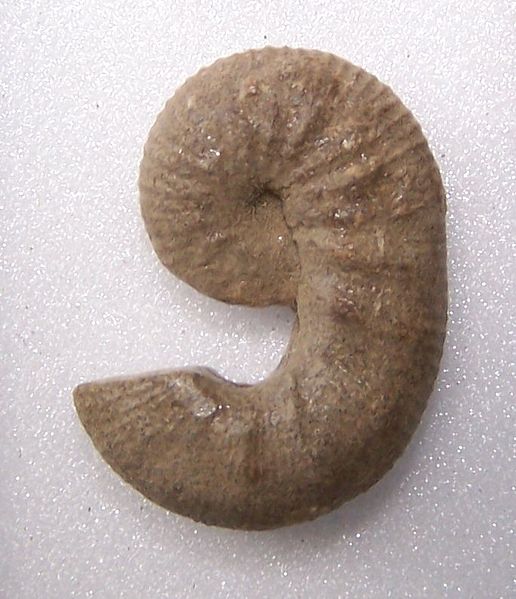[Recent Entries][Archive][Friends][User Info]
| Time | Text |
|---|---|
| 08:43 pm [Link] |
Scaphites Scaphites (Greek skafh, "a boat or anything dug or scooped out") is a genus of extinct cephalopod belonging to the family of heteromorph ammonites (suborder Ancyloceratina). They were a widespread genus that thrived during the Cretaceous period. Scaphites generally have a chambered, boat-shaped shell. The initial part (juvenile stage) of the shell is generally more or less involute (tightly-coiled) and compressed, giving no hint of the heteromorphic shell form yet to come. The terminal part (adult stage) is much shorter, erect, and bends over the older shell like a hook. They have transverse, branching ribs with tubercles (small bumps) along the venter. Reconstructions of the body within the shell can be made to portray Scaphites as either a benthic (bottom-dwelling) or planktonic animal, depending on where the center of gravity is located. Since useful fossils of the soft-body parts of cephalopods are highly rare, little is known about how this animal actually fit into its shell and lived its life. Because Scaphites and its relatives in Superfamily Scaphitaceae are restricted to certain divisions of the Cretaceous (ca. 144 to 66.4 million years ago), they are useful in some areas as an index fossil. A notable example is the Late Cretaceous Western Interior Seaway in North America, in which several endemic lineages of scaphite species evolved and now serve as the basis for a highly resolved regional biostratigraphy.
Ископаемые останки (1, 2, 3, 4):
|
| Reply: | |








